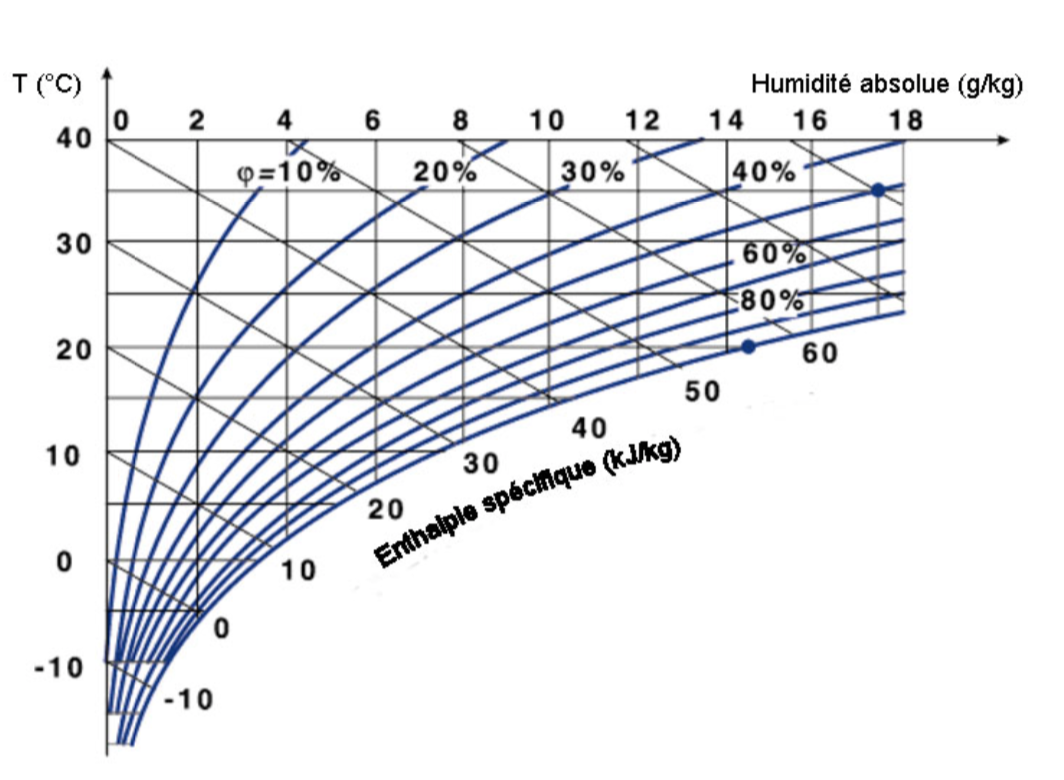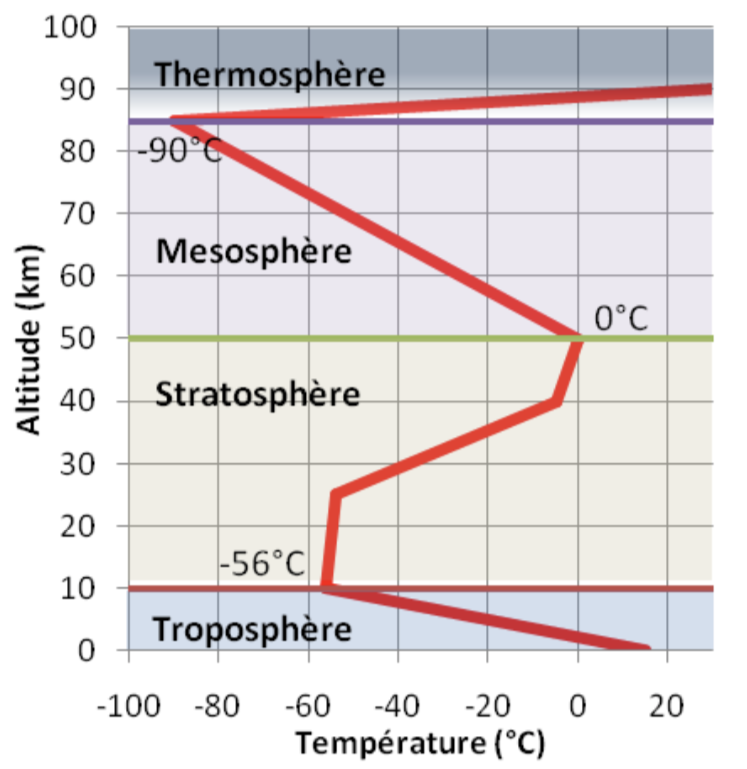The variables #
In meteorology, three variables are used: pressure, humidity and temperature. Air is a very bad thermal conductor and mixes badly. We speak of an air mass; a volume of air where the temperature and humidity are uniform.
Pressure #
It is the weight of the air column above a surface. It is therefore expressed in Newton per square meter or Pascals. 100 Pa = 1 hPa = 100 N / m2 = 1 mb.
Pressure is measured with a barometer. The standard and average pressure is 1013.25 hPa. There are other units:
- The millimeter of mercury: 760 mm Hg = 1013, 25 hPa (Anglo-Saxon system: inch of mercury).
- The atmosphere: 1 atm = 1013.25 hPa.
Above 1015hPa we speak of high pressure or anticyclone and below low pressure or depression (except in some cases: relative depression and anticyclone). The lines of equal pressure at a given altitude are called isobars. Note: at our latitudes, the time of day hardly changes the pressure.
What is the average pressure of the atmosphere at sea level?
Answer
1013.25 hPa
You read a pressure of 980hPa on the barometer, what do you deduce from this?
Answer
We are currently in the low pressure regime
Temperature #
The temperature is measured with a thermometer. The standard and average temperature is 15°C. For the same volume, warm air is lighter than cold air. Cold air descends while warm air rises.
Humidity #
Humidity is the quantity of water vapor (water in a gaseous state) contained in the air. We distinguish two humidities:
- The absolute humidity: mass of water vapor in 1kg of air. Expressed in g water vapor/kg dry air.
- Relative humidity: The relative humidity is that of “every day”. It is measured with a hygrometer. It is the quantity of water vapor that a mass of air contains compared to the maximum quantity that the same mass of air (same temperature) can contain (until saturation of this quantity of air). It is expressed in %.

Mollier diagram
The atmosphere #

Digram atmosphere
There are different layers in the atmosphere (from the ground to space):
- Troposphere
- Stratosphere
- Mesosphere
- Thermosphere
- 78% nitrogen
- 21% oxygen
- 1 to 4% water vapor
- Less than 1% carbon dioxide, ozone, sulfur or nitrogen oxides, rare gases, suspended particles
The troposphere is the only atmospheric layer that interests us. In fact, it alone represents 90% of the mass of the atmosphere. The characteristics of the troposphere are :
- Variable thickness around 12km. Varies according to the season and location: 8 km at the poles to 15 km at the equator.
- Regular drop in temperature: 6.5 ° C per km.
